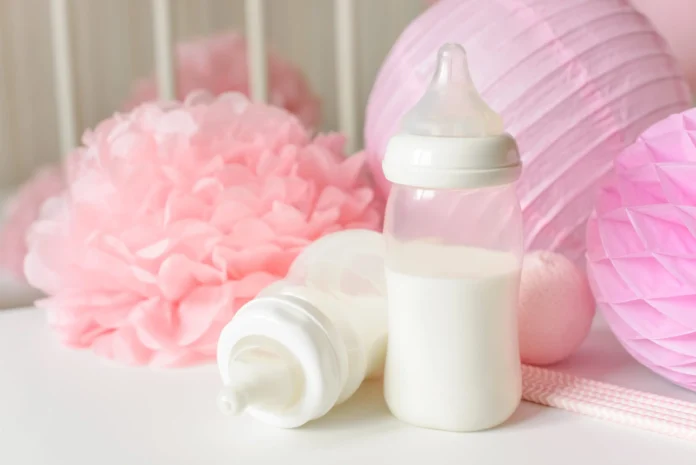
There are a number of reasons why you might want to switch your baby’s formula. Besides allergies and medical problems, there are also shortages and recalls of formula. The switch from one baby formula to another is usually not a problem for babies- even if it must be done immediately due to unforeseen circumstances. What is the adjustment period for a baby after switching formulas and how to do it efficiently? Keep reading to find out.
Reasons to switch formulas

There are a number of reasons why you may want to change the baby formula your baby is on. It may be the formula that is causing your baby’s gassiness, poor sleep, or fussiness. There are also many factors that may encourage you to try something new, such as price, availability, and ease of preparation. There are a few basics to remember before switching formulas, regardless of the reason.
A milk-based, iron-fortified formula (the type recommended for most infants) contains cow’s milk as its protein source and lactose as its carbohydrate source. Milk-based formulas do vary slightly in their protein compositions, including different combinations of casein and whey. Different oils provide the fats in these formulas.
Be sure to stick to the same type of protein when switching brands of baby formula. Before switching to a formula with a different protein source, consult your pediatrician.
Taste is usually the most significant difference between formulas. Some children are quite picky when it comes to what they eat, and they may prefer one formula over another. Since breast milk taste varies according to what a breastfeeding mother consumes, the flavor isn’t usually an important factor for most formula-fed babies.
Your baby’s formula choice really depends on personal preference as long as she/he is healthy and does not show any signs of true formula intolerance or allergy.
What you need to know about making a switch

Changing formulas on your pediatrician’s recommendation (e.g., switching to a HiPP HA hypoallergenic formula due to an allergy, for example) usually involves discontinuing the old formula and switching to the new one immediately.
If you are switching for another reason, such as price or convenience, you can try the new formula and see if your baby likes it before switching completely.
You may need to feed your baby a few times before your baby is used to the flavor of the new formula.
Change your baby’s formula gradually if he or she does not like the new one. To start, mix three parts old with one part new, and then move to half-and-half as your baby becomes accustomed to it. Gradually increase the ratio until you are only feeding the new formula.
Stick to a single brand for a week or two to see if your baby’s gas, stool, spit-up, or burping changes. For your baby’s digestive system to adjust to the new diet, it will take this long.
As long as you plan ahead, you can stick with one brand in the long run, regardless of the cost or convenience of the formula you choose.
Final thoughts
Formula switching can happen for many reasons, regardless of whether parents are exclusively formula feeding or supplementing with formula. Several reasons may be involved, including a medical issue, parent preference, or the inability to obtain the usual formula. It’s generally safe to switch, but you should always ask your baby’s pediatrician for guidance on how to do it and which formula is best for your little one.








